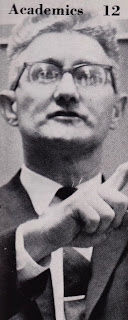[Note: this is a reprint of my post from 24 December 2012.]
 |
| Govert Flinck, Angels Announcing the Birth of Christ to the Shepherds, 1639 (Musée du Louvre, Paris) |
Now there were shepherds nearby living out in the field, keeping guard over their flock at night. An angel of the Lord appeared to them, and the glory of the Lord shone around them, and they were absolutely terrified. But the angel said to them, “Do not be afraid! Listen carefully, for I proclaim to you good news that brings great joy to all the people: Today your Savior is born in the city of David. He is Christ the Lord (Luke 2:8-11, NET Bible)
These are familiar words indeed to all raised in Christian households where the narratives of Jesus' birth play a prominent role in family and corporate worship each December. But it is their very familiarity that often renders us immune to the radical nature and theological importance of this angelic announcement. This is the only text in the New Testament in which Jesus is called Savior, Messiah (“Christ”), and Lord in conjunction with one another.
Of particular importance is the identification of Jesus as “Christ the Lord.” Jews of most stripes in the first century were eagerly anticipating—and in some cases vigorously trying to hasten—the coming of their promised Messiah, who by definition would be the “Christ of the Lord” (Greek christos kyriou) (cf. Luke 2:26!). But here Luke designates Jesus as christos kyrios, a difference of only one letter from the standard Jewish expectation (he uses the nominative rather than genitive case). This may appear at first glance to be only a minute, insignificant difference, but one would be mistaken to view it as such. Indeed, this grammatical difference demonstrates how the New Testament's portrait of Jesus breaks the bounds of Jewish messianic expectation.
Four times in Luke 1 the title “Lord” is used of God with reference to his sovereign deity (Luke 1:16, 46, 68, 76) in the context of his faithful sending of Jesus to fulfill the Davidic/Messianic promises found in Israel's Scriptures. Here in chapter 2 the angelic announcement hints at a deeper, indeed shocking, understanding of Jesus' identity. Luke later includes the bedrock Markan tradition of Jesus' own quotation of Psalm 110:1 (“The LORD said to my Lord, Sit at my right hand ...”) in which he interprets the text as a reference to the Messiah's enthronement alongside Yahweh himself, thereby demonstrating that the title “David's son” (i.e., “Messiah”) is ultimately inadequate in and of itself to describe who Jesus was (Luke 20:42-43).
The full theological import of this move only becomes transparent in Luke's sequel to his Gospel, the Book of Acts. There Jesus, the risen Messiah, is proclaimed to be worthy of the title “Lord” by virtue of his exercise of exclusively divine prerogatives. Forgiveness is received through repentance and baptism in his name (Acts 2:28). Healing and the power of salvation reside in his name (3:6, 16; 4:12; 10:43). The risen Jesus indeed is “Lord of all” and “judge of the living and the dead” (10:36, 42).
The significance of the angel's message that long ago night ca. 5 BCE is captured by the great Charles Wesley in his immortal Christmas hymn, “Hark, the Herald Angels Sing”:
Christ by highest heav'n adored
Christ the everlasting Lord!
Late in time behold Him come
Offspring of the Virgin's womb
Veiled in flesh the Godhead see
Hail the incarnate Deity
Pleased as man with man to dwell
Jesus, our Emmanuel
Hark! The herald angels sing
"Glory to the newborn King!"
Messiah Jesus—the Lord!—was willing to condescend to become a human being, in the words of the Nicene Creed, “for us and for our salvation.” The baby Jesus we celebrate each December was the baby who, according to the divine plan, would ultimately, about 37 years later, die an ignominious death on a Roman cross to save his people from their sins—born, as Wesley said, that “man no more may die.”
One of the glories of the Christian message is that God himself has done for us what we could not and cannot do for ourselves, namely, offer God the obedience that is his due and die, in our stead, the death we earned by virtue of our sin. Let those of us who bear the name of Christ reflect gratefully on this as we celebrate his birth tomorrow. If any who read this have not done so, please consider the claims made by and about the baby of Bethlehem and, like the shepherds and Magi of old, bow down before him in faith as the crucified and resurrected Lord.
I leave you with a video of "Hark! the Herald Angels Sing" from St. Paul's Cathedral, London. The majesty of the setting and spine-tingling performance of David Willcock's famous treble descant by the Cathedral choir perfectly complement the incomparably profound words the choir and congregation sing. Merry Christmas!









































